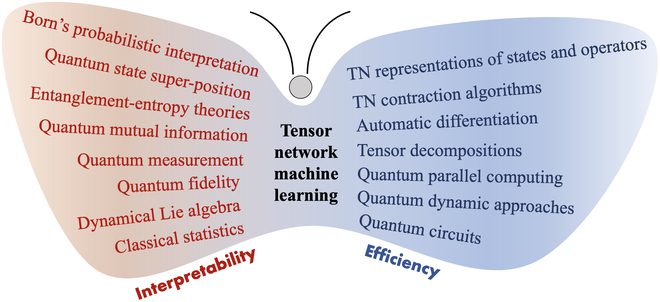TL;DR:
- Deep neural networks (NNs) excel in computer vision and NLP but lack interpretability.
- Tensor networks (TNs) offer a solution, bridging efficiency and interpretability.
- A paper by Capital Normal University and the University of Chinese Academy of Sciences explores TNs’ potential.
- TNs in quantum-inspired ML enhance interpretability through entanglement theories.
- Quantum-inspired TN ML efficiently operates on classical and quantum platforms.
- Generative pretrained transformers pose challenges and opportunities for TN ML.
- TNs are becoming a vital tool in the era of quantum computing for diverse AI applications.
Main AI News:
In the realms of computer vision, natural language processing (NLP), and various other domains, deep machine learning (ML) methodologies built upon intricate deep neural networks (NNs) have demonstrated remarkable accomplishments. Nevertheless, the enduring dilemma of interpretability versus efficiency continues to pose substantial challenges. The extent to which one can scrutinize, fathom, and trust deep ML techniques hinges on their interpretability, often characterized as the extent to which an individual can apprehend the rationale behind a given conclusion.
While Bayesian networks, Boltzmann machines, and other probabilistic ML models are often regarded as “white boxes” due to their inherent interpretability, they grapple with performance disparity when pitted against state-of-the-art deep NNs. Achieving both superior efficiency and interpretability concurrently appears to elude current ML models.
Fortunately, the rapid advancement of both quantum and classical computing has ushered in a new solution to the conundrum of efficiency versus interpretability: the tensor network (TN). A TN is formed by the contraction of multiple tensors, and its network structure determines the manner in which these tensors are contracted.
A recent scholarly work, authored by researchers from Capital Normal University and the University of Chinese Academy of Sciences, delves into the promising strides made in the realm of TNs concerning efficient and interpretable quantum-inspired ML. Termed “TN ML butterfly,” this paper enumerates the manifold advantages of TNs for ML, particularly when infused with a quantum twist. These benefits encompass the elucidation of quantum theories and the optimization of quantum procedures. TNs, in conjunction with quantum theories such as entanglement theories and statistics, offer a probabilistic framework for interpretability that transcends conventional descriptions of classical information or statistical methodologies.
Conversely, quantum-inspired TN ML methodologies are poised to deliver efficient performance on both classical and quantum computing platforms, courtesy of robust quantum-mechanical TN algorithms and substantial enhancements in quantum computing technology. Notably, generative pretrained transformers have recently witnessed remarkable advancements, resulting in unprecedented computational prowess and heightened model intricacy—both presenting prospects and challenges for TN ML. In the face of the evolving landscape of artificial intelligence (AI), particularly the emergence of generative pretrained transformers, the capacity to decipher outcomes assumes greater significance than ever before, enabling more effective investigations, secure control, and enhanced utilization of AI technologies.
The researchers posit that as we venture into the era of genuine quantum computing amid the present NISQ (Noisy Intermediate-Scale Quantum) era, the tensor network is rapidly emerging as a preeminent mathematical tool for exploring quantum AI from diverse vantage points, encompassing theories, models, algorithms, software, hardware, and applications.
Conclusion:
The emergence of tensor networks (TNs) as a bridge between efficiency and interpretability in quantum-inspired machine learning is a significant development for the market. TNs enable businesses to harness the power of quantum-inspired ML while ensuring interpretability, paving the way for more effective investigations, safer control, and improved utilization of AI technologies. This innovation positions TNs as a key tool in the evolving landscape of quantum computing, offering numerous opportunities for businesses across various sectors.

